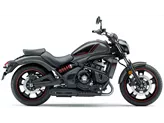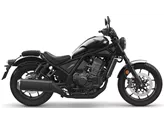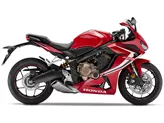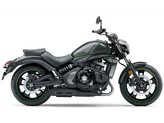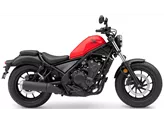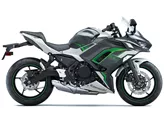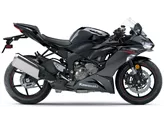Kawasaki Ninja 650 2017 vs. Kawasaki Vulcan S 2015

Kawasaki Ninja 650 2017

Kawasaki Vulcan S 2015
Visão geral - Kawasaki Ninja 650 2017 vs Kawasaki Vulcan S 2015
The Kawasaki Ninja 650 2017 and the Kawasaki Vulcan S 2015 are both popular models from Kawasaki, but they have some notable differences.
Starting with the technical specifications, both models have an inline engine with the same bore and stroke measurements. However, there are some differences in power and torque. The Ninja 650 2017 has a more powerful engine, producing 68.2 HP and 65.7 Nm of torque, while the Vulcan S 2015 has a slightly lower power output of 61 HP and 63 Nm of torque. Both models have a compression ratio of 10.8 and use a chain transmission.
In terms of chassis, the Ninja 650 2017 features a steel frame with a tubular design, while the Vulcan S 2015 has a steel frame with a perimeter design. This difference in frame design may affect the handling and stability of the bikes.

Kawasaki Ninja 650 2017
Both models have disc brakes, but there are some differences in the configuration. The Ninja 650 2017 has dual disc brakes at the front, providing excellent stopping power. On the other hand, the Vulcan S 2015 has a single disc brake at the front. While it still offers decent braking performance, it may not be as powerful as the Ninja 650.
When it comes to dimensions and weights, the Ninja 650 2017 has a narrower front tire width of 120 mm compared to the Vulcan S 2015's 18-inch front tire. However, both models have the same rear tire width of 160 mm. The Ninja 650 2017 has a shorter wheelbase of 1410 mm, while the Vulcan S 2015 has a longer wheelbase of 1575 mm. Additionally, the Ninja 650 2017 has a higher seat height of 790 mm compared to the Vulcan S 2015's 705 mm. The Ninja 650 2017 also weighs less at 193 kg compared to the Vulcan S 2015's 228 kg (both weights include ABS).
In terms of fuel capacity, the Ninja 650 2017 has a slightly larger fuel tank with a capacity of 15 liters, while the Vulcan S 2015 has a 14-liter fuel tank.
Moving on to the strengths of each model, the Ninja 650 2017 is praised for its sporty chassis, playful handling, excellent brakes, and stylish appearance reminiscent of the ZX-10R. It also has a durable engine.

Kawasaki Vulcan S 2015
On the other hand, the Vulcan S 2015 is known for its engine's good performance at both high and low RPMs, decent brakes with ABS, unique appearance, and maneuverability due to its narrow 160mm rear tire. It also features the Ergo-Fit system, which allows for optimal rider customization. Additionally, the Vulcan S 2015 offers a comfortable chassis.
However, both models have their weaknesses. The Ninja 650 2017 lacks the sound of a stock exhaust and may have slight vibrations from the engine. The Vulcan S 2015 requires an additional cost for the Ergo-Fit system, has moderate wind protection, and the gear shift indicator is only available as an option.
In conclusion, the Kawasaki Ninja 650 2017 and the Kawasaki Vulcan S 2015 have their own strengths and weaknesses. The Ninja 650 2017 offers a sportier and more powerful ride, while the Vulcan S 2015 provides a unique appearance and customizable riding experience. Ultimately, the choice between the two models will depend on the rider's preferences and priorities.
Especificações técnicas Kawasaki Ninja 650 2017 em comparação com Kawasaki Vulcan S 2015
Prós e contras em comparação
Prós e contras em comparação
Kawasaki Ninja 650 2017

A Ninja 650 é um selo firme da sua antecessora (Er-6f). O motor dominou bem a barreira do Euro 4 e oferece 68 cv muito úteis, o chassis é simplesmente fantástico para esta classe e a redução de peso de 18(!) quilos em comparação com a ER-6f justifica acenos de cabeça reverentes.
Kawasaki Vulcan S 2015

A Vulcan S está a revigorar o cenário das "pequenas" cruiser de tamanho médio - não só devido ao seu design único, mas também porque é muito fácil de conduzir e se destina a principiantes. A baixa altura do assento e o selim estreito ajudam o condutor a manter-se seguro no chão, enquanto o baixo centro de gravidade também permite um manuseamento fácil e seguro. O motor também se enquadra bem na aparência descomplicada, pode ser acelerado decentemente a partir das 2000 rpm e só pára por volta das 10.000 rpm - algo nunca antes visto numa cruiser. O sistema "Ergo-Fit", que varia a altura do assento, a distância do condutor ao guiador e os apoios para os pés, tem um custo adicional, mas também permite ao proprietário da Vulcan S generosas opções de personalização.
Comparação de preços Preço médio de mercado Kawasaki Ninja 650 vs Kawasaki Vulcan S
There are a few key differences between a Kawasaki Ninja 650 2017 and a Kawasaki Vulcan S 2015. In terms of price, the actual average prices of both motorbikes are almost the same. A Kawasaki Ninja 650 2017 experiences a loss of 480 EUR in one year and 620 EUR in two years of ownership. This is offset by a loss of 470 EUR and 490 EUR for a Kawasaki Vulcan S 2015. Compared to Kawasaki Vulcan S 2015 there are less Kawasaki Ninja 650 2017 bikes available on the 1000PS.de Marketplace, specifically 7 compared to 8. It takes less time to sell a Kawasaki Vulcan S with 75 days compared to 96 days for the Kawasaki Ninja 650. Since model year 2017 1000PS.de editors have written 20 reviews for the Kawasaki Ninja 650 and 13 reviews for the Kawasaki Vulcan S since model year 2015. The first review for the Kawasaki Ninja 650 was published on 04/10/2016 and now has more than 79 600 views. This compares to more than 14 800 views for the first review on Kawasaki Vulcan S published on 16/10/2014.


